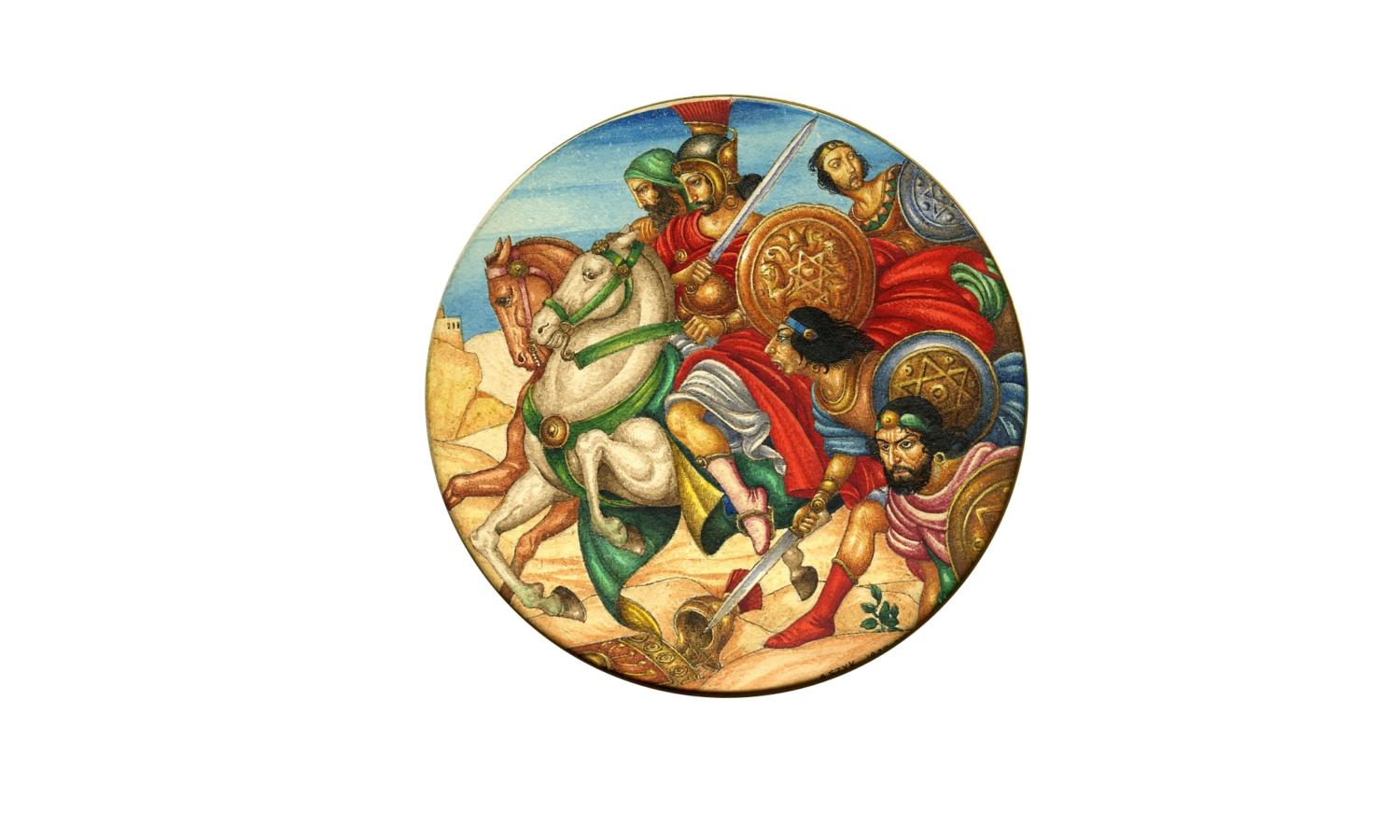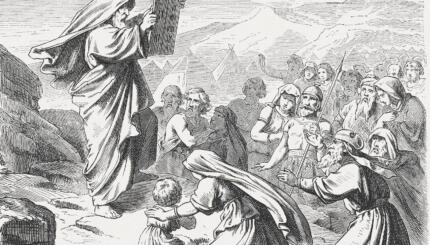Jews have long believed in the eventual coming of a Messiah — someone who will bring about a new period of true redemption for the Jewish people — and many in the possibility of predicting when he will come and who he will be. Over the last two millennia, the arrival of the Messiah has been predicted many times — always incorrectly, and often with disastrous results for the wider community.
Who Will the Messiah Be?
Classical Jewish eschatology has long held that there will eventually be a redeemer, in Hebrew moshiach (“anointed one”), who will bring salvation to the Jewish nation. In the context of the Bible, this is a title that can be conferred to more than one person. Jewish priests and kings are anointed to lead their people and even the Persian King Cyrus (not a Jew!), who freed the Jews from Babylonian captivity, is referred to as moshiach. But a more eschatological concept of the Messiah also emerges from the biblical texts — the idea that one person, a king descended from the great King David, will usher in an entirely new era of redemption for the Jewish people.
This idea has been entrenched within the Jewish belief system for at least 2,600 years.
With your help, My Jewish Learning can provide endless opportunities for learning, connection and discovery.
Messianic Claims in Antiquity
By the late Second Temple period, references to the Messiah had proliferated throughout Jewish writings. As the Greco-Roman empire subjected the Jews to harsh and anti-Semitic decrees, there was a renewed sense of urgency to find a leader who would bring respite from suffering. Late biblical books such as Daniel along with other, post-biblical texts, known as the Apocrypha, offer explicit visions as to what the ultimate redemption would bring.
Understandably, this increase in messianic discussion brought an increase in messianic predictions and even the coronation of certain people as the Messiah. During the first few centuries of the Common Era, there would be scores of individuals claiming to be moshiach, the vast majority of them never able to amass any type of following. Perhaps the most famous example is that of Jesus Christ (literally, Jesus the Messiah). The majority of the Jewish community rejected this young charismatic Jew as moshiach though he amassed a large following among non-Jews and started a movement that has become one of the largest religions in the world today.
A century later, a man named Bar Kochba achieved much better traction in convincing the Jews of his anointed status. After the Temple was destroyed in 70 CE, the Jews were so badly beaten by the Roman empire that they had no fighting chance to drive the foreign rulers from Jerusalem. But several decades later in the early second century, Bar Kochba was able to rally troops, planning a general Jewish uprising against Rome. A few early local victories began to convince both the Jewish masses and some in the religious leadership, most famously Rabbi Akiva, that Bar Kochba was moshiach and would deliver the Jews from oppressive Roman rule.
As Bar Kochba and his uprising gained support from Jews hailing him as both a military expert and Messiah, more people would join the fight. The revolt began in earnest in 135 CE — and it was a disaster. Rome crushed the uprising and over half a million Jews were slain and hundreds of thousands more exiled.
After the failure of the Bar Kochba revolt, false messianic claims quieted for a few centuries. But hopes were not quashed. The Talmud, penned during this time, offered several predictions for the arrival of the Messiah, including the year 440 (Sanhedrin 97b) and 471 (Avodah Zarah 9b). In the mid 5th century, a man named Moses of Crete decided he was the one the Talmud had predicted. Swearing he would, like his biblical forbear, lead his followers through the water and back to the Promised Land, Moses convinced his fellow Jews to leave behind all their belongings and march directly into the sea. While Moses himself disappeared — some accounts argue that he perished in the sea, and others that he fled the scene — many of his followers drowned. Others, the lucky ones, only lost their belongings.
Karaite Messianism
The Karaites are a sectarian movement that rejects rabbinic Judaism, holding sacred only the Hebrew Bible and not the Talmud or other rabbinic writings. Many of the early influencers of this movement led messianic charges, promising to rebuild the Temple in Jerusalem so they could return to offering sacrifices (rabbinic Judaism had replaced sacrifice with Torah study and prayer). Needless to say, none of these false messiahs succeeded and many of their followers were slaughtered in battle, deserted by their leaders. Some disappointed followers even ended up forming separate religious groups, such as the Yudghanites, vowing that their killed Messiah would return.
More Messianic Movements of the Middle Ages
Dozens of other examples scattered throughout the Middle Ages further elucidate Judaism’s long and tortured history of false Messiahs. In the 12th century, another “moshiach” named David Alroy (born Menahem ben Solomon) tried rising up against the Muslim empire. His chosen name alludes to his status as Messiah descended from King David; the name Alroy might mean “the inspired one.” David Alroy’s plan was lead the Jews back to Jerusalem, overthrow Muslim rule, and establish himself as their king. Ultimately, his revolt failed and he was assassinated. His followers, undeterred by his death, formed a Jewish break-off movement known as the Menahemists.
Yet another unspecified moshiach, discussed by Maimonidies, convinced many Jews in Yemen to give away all their possessions before he was slain. Then, unsurprisingly, in the rise and subsequent spread of Kabbalah towards the late medieval period, many other Jews would claim to be miracle workers and Messiahs similarly leading Jews to death, poverty, or out of the Jewish community.
The Most Famous False Messiah
Perhaps the most famous of all the false messiahs was Shabbetai Zevi, an early modern charismatic Jew who lived in the early Ottoman empire. Building off Kabbalistic messianic traditions, Zevi started to gain a following to whom he would teach esoteric and mystical Jewish ideas. As his following grew, Shabbetai Zevi began to perform open “miracles”, publicly chant the name of God, and eventually declare himself the Messiah. At first few accepted this messianic declaration but over time a variety of well-known Kabbalistic leaders embraced this young moshiach. Towards the end of his life, Zevi was imprisoned by the Islamic hegemony and given an ultimatum: be killed or convert to Islam. As he chose the later, thousands of his own followers also converted while others looked to the creation of a different religious movement known as Sabbatianism.
Conclusion
The idea of identifying the Messiah is still alive and well in the Jewish community today. Though for some Jews the Messiah represents a futuristic ideal, for others the concept is far more concrete. For example, many followers of Rabbi Menachem Mendel Schneerson, leader of a Hasidic sect called Chabad, believe that he never died and is in fact moshiach.
For every example of a false Messiah written about here, there are dozens of examples not mentioned. In times of hardship and fervor, Jews have repeatedly believed the Messiah was identifiable and at hand — only to be disappointed. A detailed account of all the false Jewish Messiahs recorded in history could fill a book, and this precludes the mention of hundreds of claimants lost to the dustbin of history. While the setting and scope of each of these stories widely differ, they are united by failure and false hope — the vast majority causing death and destruction, loss of property, or conversion.



